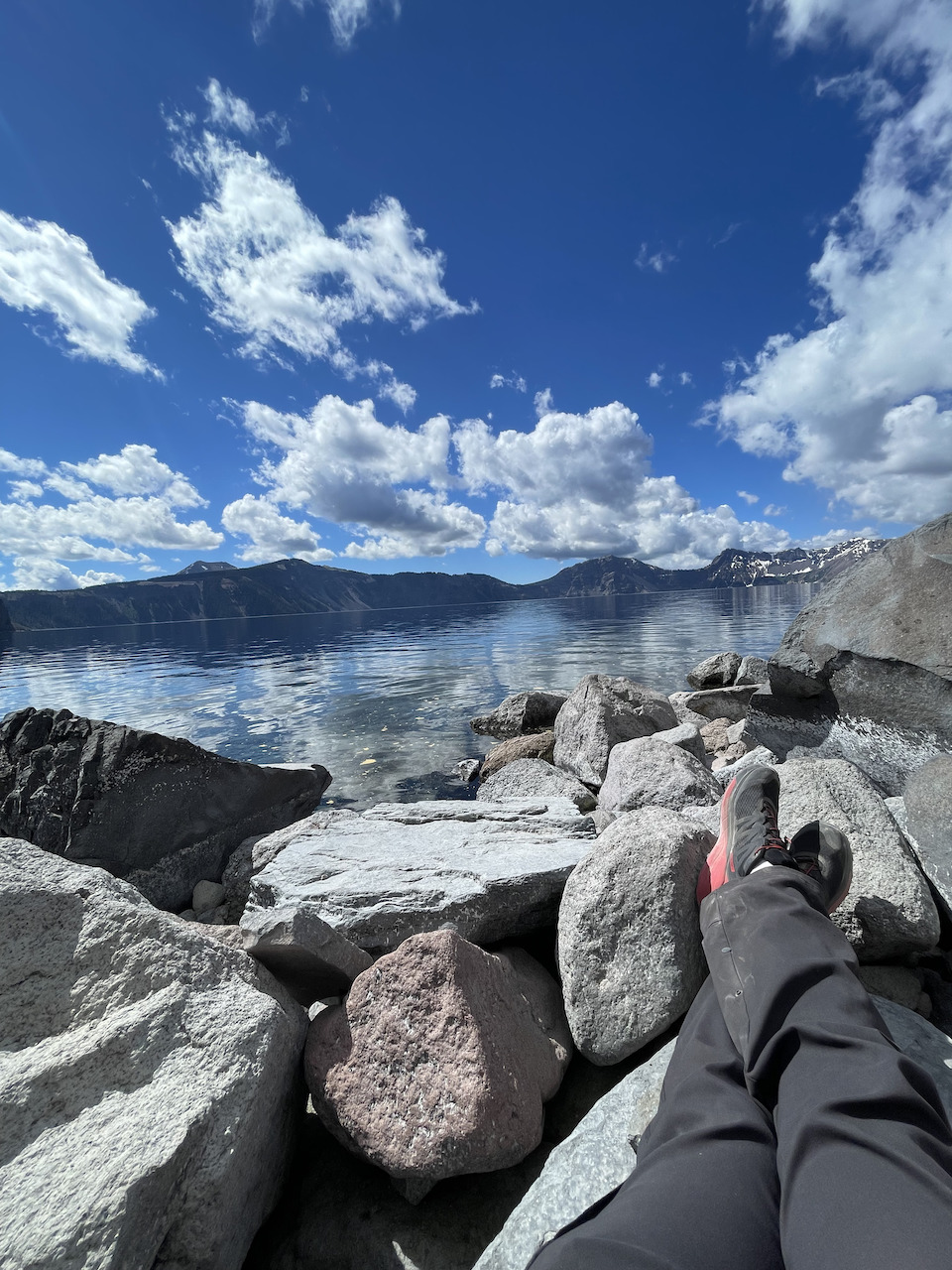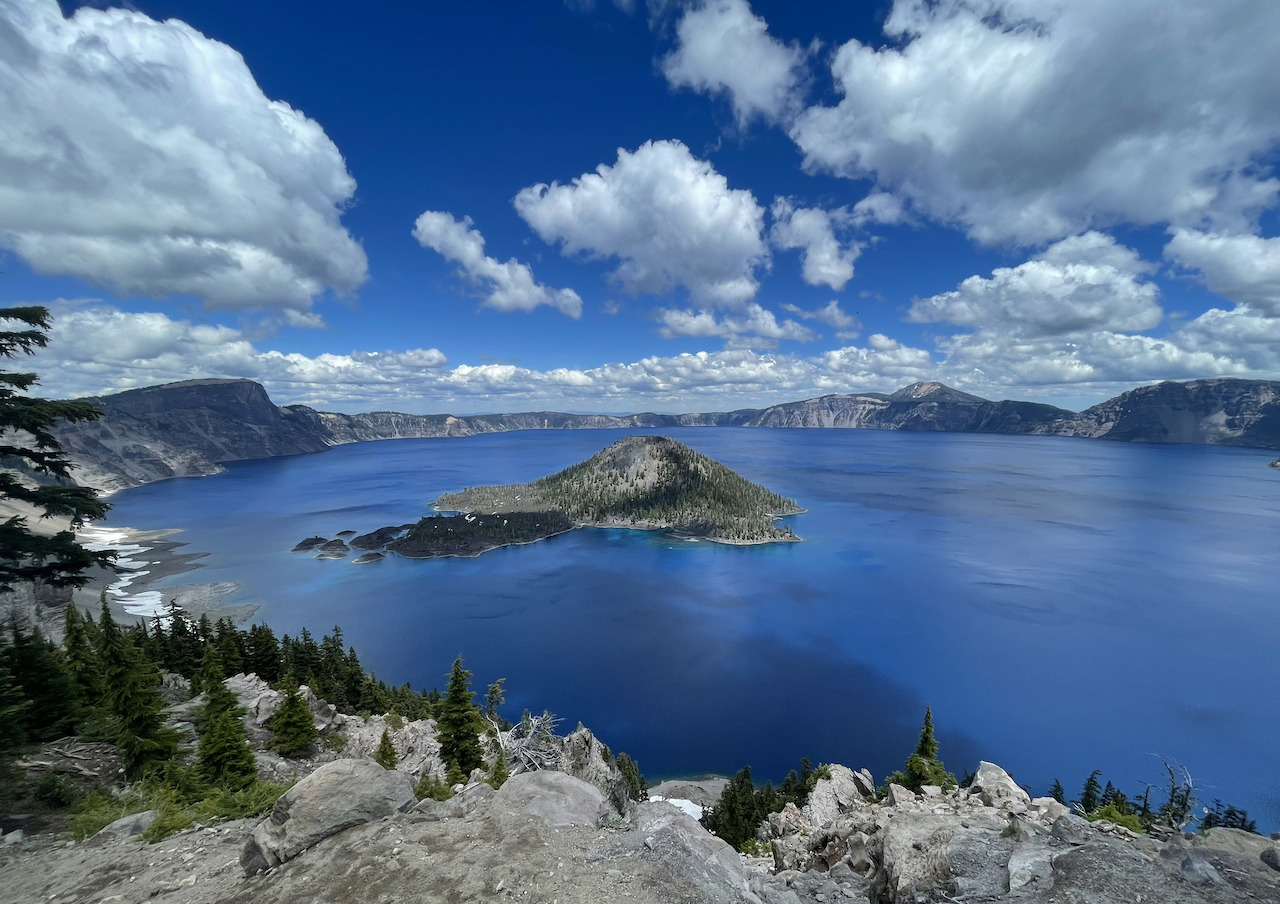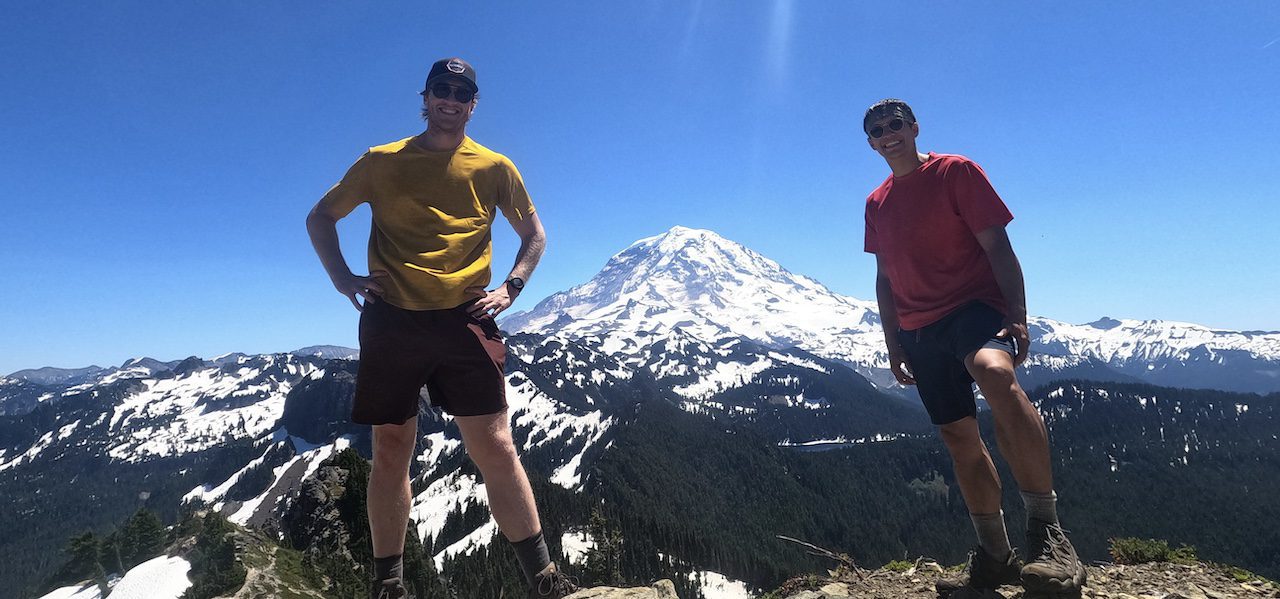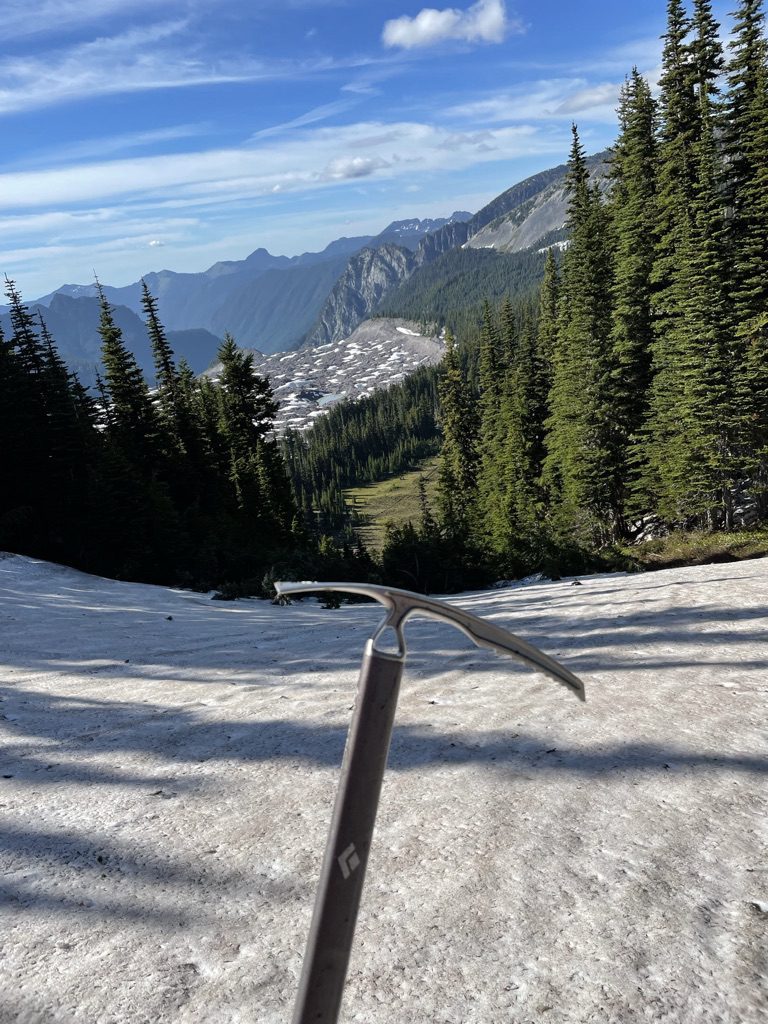How To Spend 3 Days In Crater Lake National Park?
What is up ladies and germs are you ready to visit a unique landscape with the bluest water you will ever see and do some hiking?! Well Crater Lake National Park is just the spot for you! I loved my time here and am excited to share with you how to spend 3 days in Crater Lake National Park.
But before we get any further, you should make sure you have the necessary day hiking gear, so you are well prepared for this action-packed vacation!

Overview:
Closest Major Airport: Eugene Airport ~120 miles from the park.
How Many Days To Spend In Crater Lake: 1-3 days
Camping Available In The Park: Yes. Two main campgrounds are available within the park, including Mazama Campground and Lost Creek Campground. Check the Crater Lake National Park website for more details on availability and closures.
3 Day Crater Lake National Park Itinerary:
Crater Lake is an incredible national park, and I think three days is the perfect amount of time to spend here to see what you need. Let’s jump right into how you should spend your 3 days in Crater Lake National park.
Day 1: Visit The Lodge And Do The Rim Drive

On the first day, I would start by swinging by the ranger station to learn more about the park. I make it a habit of always speaking with a park ranger when I first arrive at a park to get their insights and important updates such as trail or road closures!
After you get the inside scoop on the park, I highly recommend driving around the rim of Crater Lake. At about 33 miles, this scenic drive will give you 360 views of this Crater Lake while taking time to stop at some of the spectacular viewpoints on the ride. The trip can take about two hours, depending on how many stops you make and how long you spend at each outlook, but it is more than worth it.
Keep in mind that the opening of the entire road may not happen until later in the summer, depending on that season’s snowfall. So be sure to stay current on road conditions before planning your trip.
Day 2: Hike Watchman Peak and Cleetwood Cove Trail

On your second day, I recommend waking up early to catch sunrise and hike up to Watchman Peak. After your hike up to Watchman Peak spend the remainder of the day hanging out at Cleetwood Cove.
Hike Watchman Peak

Distance: ~1.6miles roundtrip
Elevation Gain: ~420 ft
You will start at the Watchman overlook (picture above), and then you have about 1.6 miles round trip with some stunning views of the lake the entire way up!
Hike To Cleetwood Cove:

Distance: ~2.2miles
Elevation Gain: ~700ft
After hiking Watchman peak, you should make your way to Cleetwood Cove. During this hike, you will descend to water level. Here you can enjoy your afternoon, have a picnic and take a dip in the famous deep blue water of Crater Lake. Cleetwood Cove is the only point where the public can access the lake, making it an absolute must-do.
The good news for fishermen is that you can fish in Crater Lake, so don’t forget to bring your pole and tackle!
Day 3: Hike Plaikni Falls And The Pinnacles:

On your third day, I recommend heading to the Southeast section of the park, where you will take some time away from the incredibly vast Crater Lake and explore this unique area during these two easy hikes.
Hike Plaikni Falls
Distance: ~2miles roundtrip
Elevation Gain: ~100ft
During this hike you will enjoy a nice walk to some incredible waterfall created from snow melt. What’s more, this trail is wheelchair accessible making it doable for all!
Hike The Pinnacles:
Distance: ~0.8miles roundtrip
Elevation Gain: ~10ft
Just a short drive east of Plaikni Falls you can hike the Pinnacles, another easy hike that is wheelchair accessible where you can explore a canyon filled with volcanic pumice spires!
Other Cool Things To Do In Crater Lake National Park:
If you have more time on your hands and want other fun things to do, check out some other things to do in Crater Lake National Park Below!
Do Another Hike:

There are a ton of day hikes to do in Crater Lake National Park. Many of the front-country hikes are very easy, take a look at a list of them and their mileages at the national park website.
Cycle Rim Drive:
If driving around the lake sounds boring to you, maybe cycling it would be more your speed. A popular road cycling destination Crater Lake even closes down the rim for the famous “Ride The Rim” event where participants can bike, walk or run the circumference of Rim Drive.
Take A Ferry And Explore Wizard Island:

When you visit Crater Lake National Park, you will notice a little island in the middle of America’s largest lake known as Wizard Island. What’s cool is that you can take a ferry and hike to the top of Wizards Island, where you can witness Crater lake from a unique vantage point and an impressive crater that lies at the summit! If this sounds fun to you, look into reservations through Crater Lake Hospitality.
Do A Trolley Tour Around Crater Lake:
If hiking isn’t your thing, but you still want to experience Crater Lake, I highly recommend looking into the trolley tours! These tours allow you to enjoy the fantastic views from a trolley guided by an onboard park ranger, where you will get neat insights about the parks nature, wildlife and history. Trolly reservations can be made at Crater Lake Trolly.
Gear You Should Have When Visiting Crater Lake:
As with any adventure, you must have the proper gear before heading out. I recommend looking at my “Ultimate Day Hike Gear Guide” so you have all the necessary equipment for hiking in Crater Lake National Park. Also do not forget to bring a map!
Frequently Asked Questions About Crater Lake National Park:
How Much Does It Cost To Enter Crater Lake?
Entrance fees for Crater Lake include:
- $30 for private vehicles
- $25 for motorcycles
- $15 for cyclists/pedastrians (people walking into the park)
- FREE with the America The Beautiful Pass!
Can You Sleep In Your Car In Crater Lake?
You may sleep in your car at paid for campsites at Crater Lake National Park. Otherwise you may not park overnight within the park. If you wish to boondock or disperse camp near crater lake there are a few options near the south entrance and the north entrance near Diamond Lake check out ioverlander for assistance finding free campsites.
How Deep Is Crater Lake?
Crater Lake is 1,943ft deep making it the deepest lake in the United States!
Can You Swim In Crater Lake ?
Yes. You can swim in Crater Lake but the only access-point is through the Cleetwood Cove trail
Can You Fish In Crater Lake?
Yes. You may fish in Crater Lake either from Cleetwood Cove or Wizard Island. There are no permits or limits when fishing.
Where Can I Walk My Pet In Crater Lake National Park?
You may bring your pet within 50 feet of any trail, on paved roads, picnic areas and some designated trails. Pets are NOT permitted to go in Crater Lake.
How Was Crater Lake Formed?
Crater Lake was formed from a collapsed volcano of Mount Mazma about 7,700 years ago!
Why Is Crater Lake So Blue?
There are no streams or rivers that flow into Crater Lake. All the water within the lake comes from rainfall or snowfall, resulting in low sediment levels within the lake and making it one of the cleanest lakes in the world!
Can You See Bald Eagles At Crater Lake?
Yes. You can often see bald eagles during the summertime at Crater Lake.
Disclosure: Some links on this page are affiliate links, and if you go through them to make a purchase or a booking, I may earn a commission. Using these links DO NOT affect the cost of the product/booking. The price remains the same affiliate link or not. Thanks for supporting my small business!




























